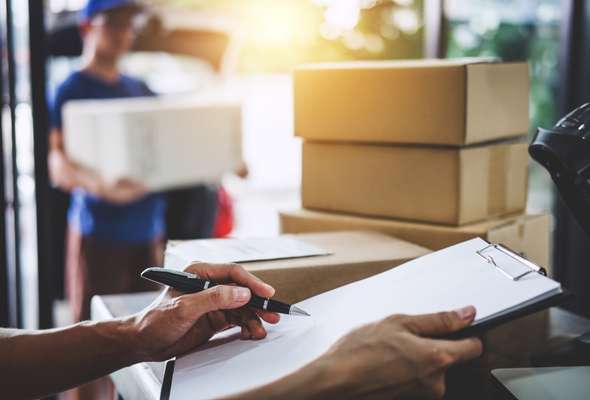
What Factors Should Organizations Consider Before Outsourcing Their Internal Audit Functions?
+91 1141182211 Outsourcing has become a strategic choice for many organizations looking to streamline operations, reduce costs, and enhance efficiency.

According to Redseer, the GDP share of India’s global road logistics is about 8%, and by 2024, market analysts predict earnings to reach $6 billion.
But economical and environmentally friendly options must be developed, since “last mile” delivery – which accounts for 20 percent of the chain’s overall costs – is the most costly.
When you move closer to the final client, the unit transport expenses are frequently the highest, even if the initial few kilometers are properly regulated. Since the unit cost of transportation rises as the product approaches its destination, the last mile is when it reaches its highest level.
The harsh reality is that the last kilometer is the most expensive. It accounts for around 20% of the nation’s traffic, 30% of the road system, and 25% of greenhouse gas emissions.
Because delivery and online purchases, which currently account for 80% of the number of goods shipped, are synonymous with e-commerce. And for newcomers to the industry, this is one of the major problems. Particularly now that express (delivery in 24/48 hours) is solidifying its position as a genuine selling factor and is virtually a norm.
Many measures are now being implemented to reduce the detrimental effects of this last mile. Therefore, it is essential to implement efficient and innovative solutions.

It is now a fact that consumer habits and purchasing patterns are evolving. Consumers are placing more low-volume orders due to the growth of online commerce and their desire for immediate gratification. With more and more packages needing to be delivered to end users, this new phenomenon is boosting the flow of commodities.
This is the first challenge of the last mile for logisticians! Food deliveries are no exception. Consumers avoid going to supermarkets on busy days and regularly order their groceries online. Orders are usually processed during the week for home delivery in a few days or even hours.
The utilization of carriers’ information systems and the reception capabilities of relay stations resulted in an average delivery of ten tonnes of products and 100 packages per day, serving 80% of the population.
They are unquestionably advantageous economically since this approach restricts the number of stops that deliverers may make (15 stops on average) for pick according to Ifop, relay stations are the primary distribution method for 50% of Internet subscribers. The last mile has probably changed more over the past three years than it has over the preceding three decades put together.
At a time when reducing greenhouse gases is a topic of increasing discussion, freight transport accounts for 25% of CO2 emissions in the city, especially in urban areas will continue, along with the introduction of new models, in the years to come. Consumers are giving more and more weight to the ethical approach of retailers in the context of global warming. This is why retail businesses, who contribute significantly to harmful emissions in cities, are now focusing on improving their environmental footprint.
In order to meet customer demand, market volatility will continue to be a concern for shippers and carriers. In order to secure speedier delivery of their goods, shippers with less-than-truckload-size cargoes pay for full truckload (FTL) service, which results in inefficient use of space and money. As a result, there are more delivery vehicles, their routes are longer, and more stops are made.
Shipping companies must prepare for lower volumes of orders that fall into the volume LTL range and assess pricing depending on the amount of truck capacity they require. Between these two factors, there is frequently a wide gap, which is where pooling comes into play.
This is especially true given that e-commerce expansion has led to an increase in delivery and a decrease in package size. For carriers with loads that fall between FTL and LTL, consolidating saves unused space in trucks by packing them with freight from other shippers. One of the greatest advantages of all is still unaddressed, and that is cost savings.

The number of plots will keep growing at a pace of 20 percent yearly. It will be necessary to find solutions to stop the last mile from becoming a catastrophe for the environment. E-commerce will grow, but so will the fragmented in-store deliveries and hybrid forms of product flow brought about by omnichannel logic.
Flows will keep accelerating. Although currently small, the D-Day segment – order in the morning, delivery in the evening – will likely account for 20 to 25 percent of the market.
As just-in-time deliveries (ship-from-store) grow more common, stores will become the primary urban logistics network locations. Due to the fact that the last mile’s value is primarily commercial, its cost will keep decreasing.
To reduce air pollution, several programs during the previous years have tended to promote less polluting forms of transportation. However, trains, air, and rivers are manifestly useless for direct delivery to shops or individuals. As a result, home delivery has emerged as an extremely optimistic market for road transportation.
However, this pooling, which is based on standardized, open, and shared technologies has benefits: the fact that it also makes it conceivable to enhance cohabitation with neighbors by significantly lowering the number of deliveries and the ensuing issues.
These factors are growing urbanization, which will result in half of the world’s population living in cities by the end of the century, and the growth of e-commerce, which fragments deliveries.
And a different business model must prevail in order to minimize the additional cost by sharing its platforms and the usage of trucking services with others in order to reduce expenses. In all instances, preference should be given to electric cars (or non-polluting vehicles), the pooling of delivery means, and the socio-economic expenses paid by cities (air pollution, noise, and congestion).
India’s delivery environment has undergone a great deal of change during the last few decades. A new delivery industry, the last-mile delivery ecosystem, has emerged in response to the growing demand for local goods and an unanticipated increase in last-mile delivery.
The last-mile delivery industry in India is developing comparably to that in China and the United States, where coverage is now above 10%. By 2024, India is projected to reach a market size of $6-7 billion if its rapid expansion continues.
The difficulties that logistics providers need to stay on top of to prepare for the future of last-mile delivery include understanding industry trends, inefficiencies in your current operations, analyzing expenses, and being aware of what action items need to be handled in the future.
Companies need to plan and scale up how they will decarbonize their delivery fleets in a way that is “socially just” and compatible with environmental and climate responsibility and responsibilities, given that the Indian ecosystem is predicted to vastly expand in terms of business.
Like this article?
More To Explore

What Factors Should Organizations Consider Before Outsourcing Their Internal Audit Functions?
+91 1141182211 Outsourcing has become a strategic choice for many organizations looking to streamline operations, reduce costs, and enhance efficiency.

Outsourcing Internal Audit: Evaluating the Upsides and Downsides for Your Organization
+91 1141182211 In today’s dynamic business environment, companies face increasing pressure to enhance efficiency, manage risks effectively, and ensure compliance

A Background Verification Guide: Frequently Asked Questions and Their Answers
+91 1141182211 Background verification (BGV) is a crucial process used by employers to ensure they are hiring candidates with accurate